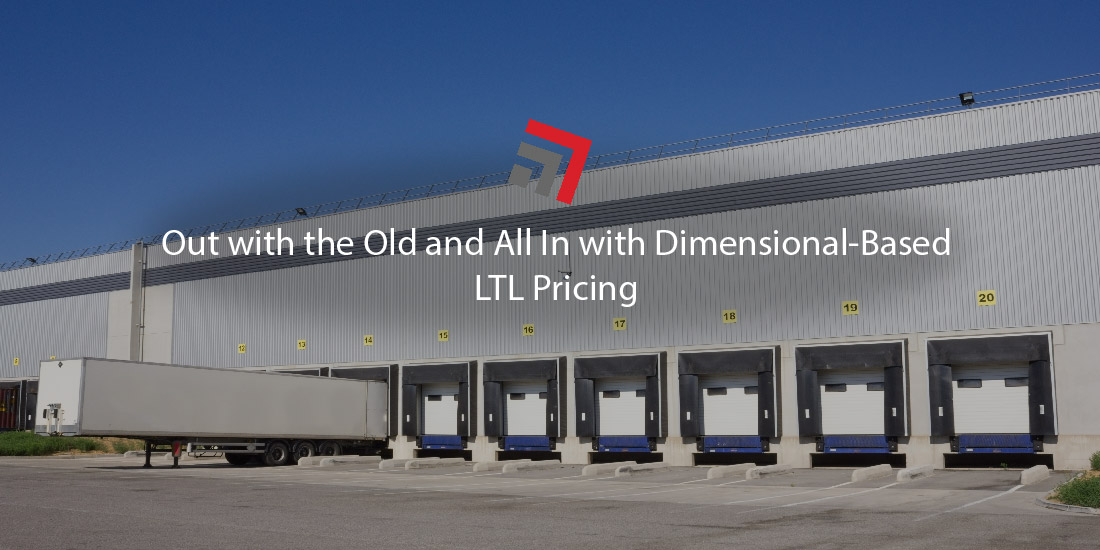The standard classification formula for LTL pricing has been around since the mid-1930s. Lou Gehrig was the face of the New York Yankees, Jesse Owens won four gold medals at the Berlin Olympics, and a planned Martian invasion was foiled thanks to Orson Welles’ PSA broadcast of The War of the Worlds.
With this formula soon blowing the candles out for its 90th birthday, the industry had to think at some point that maybe this age-old standard is a bit archaic.
Well, one of the largest LTL, or less-than-truckload, carriers is set to depart from this tradition. On Tuesday, the carrier announced its new “space and pace” pilot program.
The program looks to price LTL freight tendered by select customers based exclusively on the shipment’s weight and dimensions, how much space it occupies aboard a trailer and when it needs to arrive.
To better understand the novelty of this pricing pilot, our experts at Commerce Express Inc. suggest you get comfortable—first a history lesson has to be shared.
Out with the old?
As mentioned above, LTL pricing has been governed by a product classification formula. Formally known as, The National Motor Freight Classification (NMFC), it is similar in concept to a grouping or grading system that you may find in other industries.
The NFMC, overseen by the National Motor Freight Traffic Association, provides a comparison of commodities that typically move in our country’s interstate, intrastate, and foreign trade.
These said commodities are each grouped into one of 18 classes. Ranging from the lowest—class 50—to the highest—class 500, a commodity’s assigned class is determined by evaluating four transportation characteristics: density, handling, stow-ability, and liability. The culmination of these four characteristics establishes a commodity’s transportability.
Class 50, sometimes called “clean” freight due to its easy fit and low cost, are dense and heavy commodities. Examples would be industrial goods (bolts, steel rods, etc.,) and bagged materials (flour, concrete, etc.,). While Class 500, are low density or high value commodities bringing the highest cost. Examples would be ping pong balls or bags of gold dust.
That concludes our crash course about LTL’s pricing dinosaur. We assure you there is no pop quiz at the end.
A problem with the age-old classification formula
Ideally, with a class set to a commodity, the NMFC provides carriers and shippers alike with a standard by which to begin negotiating costs. For a model that has lasted some 90 years, you might be thinking it has held up fine.
While its apples-to-apples comparison across thousands of items simplifies pricing decisions, the age-old classification formula can also be confusing to comprehend. Shippers, carriers, and other involved parties may butt heads over how a shipment should be classified often leading to disputes and chargebacks afterward.
In with the new?
In the present day, paying sole credence to the NMFC’s resource may not be the best bet for LTL logistics.
Emerging technologies over the last few years have allowed for carriers to accurately pinpoint a shipment’s weight and dimensions. In return, some have offered pricing based on the amount of space the freight takes up and the delivery commitments associated with it.
In other words, a handful of LTL carriers have already been using innovative technologies in culmination with the NMFC to guide their pricing.
However, what makes the “space and pace” pricing pilot groundbreaking is the decision to avert the old-school classification formula completely.
Instead, the new program will be fully modeled around dimension-based pricing altogether.
The belief from the carrier is that this will simplify its pricing structure by omitting complex freight classifications. The pricing will be tied solely to the space and pace the customer needs to move the freight. Quotes can be issued based on weight, dimensions, and ZIP codes provided by the shipper.
The program touts itself as the bringer of simple rates, straightforward invoices, and eradication of class-based surcharges.
Transparency of cost seems to be the selling point. In a statement, the carrier assured customers accurate pricing will be laid out on the frontend and reduce backend disputes and chargebacks, common gripes with the classification-based approach.
Final Thoughts
LTL experts, including yours truly at Commerce Express Inc., are joyed to see what seems like a logical reduction of certain complexities with LTL logistics.
From our end, this is not so much an indictment to the classification formula, but rather a celebration of innovative technologies being embraced by industry stakeholders.
A logistics provider of any kind should always keep its head on a swivel—always looking for a way to bring a simpler and more transparent shipping experience for a customer. We will continue to monitor the progress of this new pricing pilot.
Contact one of our team members if you have any questions regarding this topic or any others in domestic logistics.
This is an everchanging industry. Stay current on rail and trucking developments with our weekly Road Map Newsletter.



Recent Comments